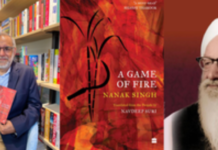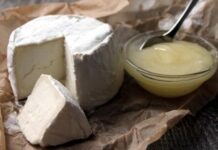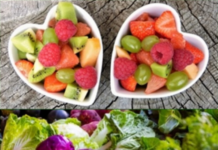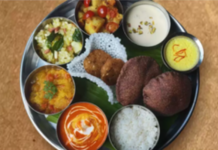BY VISHNU MAKHIJANI
New Delhi–Food historian and author Salma Yusuf Hussain’s “passion to find out more and more about the cuisine of Mughal India” has resulted in her latest offering: a seminal work that transports the reader into the heart of the royal kitchens to bring alive the lavish banquets of Emperor Shah Jahan, during whose time Mughlai cuisine truly reached its peak.
“I am a post-graduate in Persian and my first job was to translate the correspondence between native Nawabs and Rajas with British authorities and also the (1857) Mutiny papers. This gave me knowledge to read hand-written Persian documents. As my job was research-oriented i went through various catalogues of different libraries. During my research it occurred to me that Mughal emperors who were good in preserving an account of their achievements must have left behind some documents on food also,” Hussain told IANS in an interview on the creation of “The Mughal Feat” (Roli Books/Rs 1,495).
“This thought was the turning point in my life and my search began on the subject. I did come across a hand written account on culinary art of Emperor Jahangir’s reign. I translated a complete cook book called Alwan-i-nemat but could not publish it due to various reasons.
“At the same time (publisher) Rupa commissioned me to translate a chapter on pulao from Nuskha-i-Shahjahani and with this, I discovered the other manuscript on the subject. Pramodji (the Rolli publisher) who is equally keen to publish books which have a different flavour procured this manuscript from British library and gave it to me to translate it. The result is before you,” Hussain added.
Thus, “The Mughal Feast” is a loving transcreation (adopting from one language to another maintaining its intent, style, tone and content) of “Nuskha-i-Shahjahani”, a cookbook maps a culinary journey into the Mughal imperial kitchen, where food was cooked with just the right amount of spices to enhance the base flavours of the dishes.
The book begins with an elaborate and rather mouth-watering introduction and continuies through seven chapters of recepes for Naan; Aash; Kaliya and Do-Piyazah; Bharta; Zeer Biryani and Pulao; Kabab, Harisa, Shisranga and Khagine; and Shiriniha.
How did the cooking bug bite in the first place?
“My mother cooked the best of the food for family Dawats. I used to observe her cooking and at times also helped her. Here at Curzon Road Apparment (during her stint with AIR), I brought that little knowledge to practice and improved it by getting more recipes from friends and neighbours. For each get-together I would cook a new menu with my cook Gopalji and felt proud when food was appreciated by friends.
“Later in life when I married a tour operator, we entertained foreign groups, friends from hospitality deptments and presented food which was a vow. My husband, being from Lucknow, was my best critic. With passage of time, my life took a different course. I got involved with ITC and the process of my research became more aggressive. With that, each of my parties became bigger and my table varied with delicious cuisine,” Hussain explained.
Hussain, whose books include the award-winning “The Emperor’s Table: The Art of Mughal Cuisine” (Roli Books), which received the National Tourism Award in 2009, the Best in the World Gourmand Award for culinary history the same year and a heritage volume tracing the history of dining and entertainment at the Rashtrapati Bhawan, “Around India’s First Table”, is much sought after.
Hussain, who contributes stories on culinary history to the Urdu section of the BBC, was also a food consultant with ITC in making of the menu for the Grand Maratha, the Sonar Bangla and the Grand Central.
AASH-E-NAKHUDI
Thick sweetened lamb and vegetable soup (Serves: 8-10)
Ingredients:
Lamb, cut into medium-sized pieces 2 kg
Ghee 2 cups/500 gm
Onions, sliced 2 cups/500 gm
Salt to taste
Ginger (adrak), chopped 8 tsp/40 gm
Beetroot (chuqander), cut into cubes 1 cup/250 gm
Carrots (gajar), cut into cubes 100 gm
Turnips (shalgam), cut into cubes 1 cup/250 gm
Cloves (laung) ½ tsp/3 gm
Egg white 1
Sugar 3 cups/750 gm
Juice of lemon (nimbu) 3
Coriander (dhaniya) seeds, pounded 8 tsp/40 gm
Almonds (badam), fried, ground to paste 5 tsp/20 gm
Rice paste 8 tsp/40 gm
Cinnamon (dalchini), ground ½ tsp/3 gm
Green cardamoms (choti elaichi), ground ½ tsp/3 gm
Black peppercorn (sabut kali mirch), ground 2 tsp/10 gm
Spinach (palak) ½ cup/125 gm
Dill (soya saag) ½ bunch
Saffron (kesar) ½ tsp/3 gm
Method:
1. Heat the ghee in a pan; add the onions and fry until golden. Add half the lamb pieces, salt and chopped ginger; fry until the lamb changes colour. Add sufficient water to partly cook the lamb.
2. Now add the beetroot, carrots and turnips with 3 cups water to cook the meat and vegetables on low heat.
3. When the lamb and vegetables are cooked and at least 1½ cups water remain in the pan, separate the lamb and vegetables from the stock and reserve. Strain the stock and temper it with 2 cloves; keep aside.
4. Make a fine mince of the remaining lamb pieces. Make a dry do-piyazah (see pg. 218) with the mince and grind to a fine paste. Add white of egg and knead into a dough. Make marble-sized balls of this mix and deep-fry in hot oil.
5. Make a sugar syrup of one-string consistency with lemon juice (see pg. 219). Add half of the syrup to the reserved stock and bring to
a boil.
6. Add the pounded coriander seeds, almond paste and rice paste to the stock; mix well.
7. Sprinkle ground cinnamon, remaining cloves, cardamom and black pepper; mix well. Add the spinach, dill and lamb pieces; bring to a soft boil and remove from heat.
8. Transfer into a serving bowl. Add the remaining syrup to the prepared soup and serve hot garnished with saffron.
DO-PIYAZAH ZAMEENQAND
Slow-cooked tangy yam with Indian gooseberries (Serves 4-6)
Ingredients:
Elephant foot yam (zameenqand), washed, cleaned, cut into medium-sized pieces 1 kg
Tamarind (imli), soaked in water 5¼ tbsp/80 gm
Ghee 1 cup/250 gm
Turmeric (haldi) powder 2 tsp/10 gm
Onions, sliced 1 cup/250 gm
Indian gooseberries (amla), halved 10 gm
Coriander (dhaniya) seeds, pounded 4 tsp/20 gm
Ginger (adrak), chopped 4 tsp / 20 gm
Salt to taste
Freshly ground to a fine powder:
Cinnamon (dalchini) ½ tsp/3 gm
Cloves (laung) ½ tsp/3 gm
Green cardamom (choti elaichi) ½ tsp/3 gm
Black peppercorn (sabut kali mirch) 1 tsp/5 gm
Method:
1. Squeeze the tamarind with water to obtain the juice.
2. Heat the ghee in a pan; add the turmeric powder to colour the ghee. Add the onions and fry until golden brown.
3. Add the yam, gooseberries, tamarind water, pounded coriander seeds, ginger and salt; cook, on low heat, until the yam is tender and little water remains. Sprinkle freshly ground spices and put on dum (see pg. 218) for 5 minutes.
4. Remove from heat and keep the dish on hot ashes, covered, for 2 hours to imbibe the smoky flavour. Then uncover and serve. (IANS)















